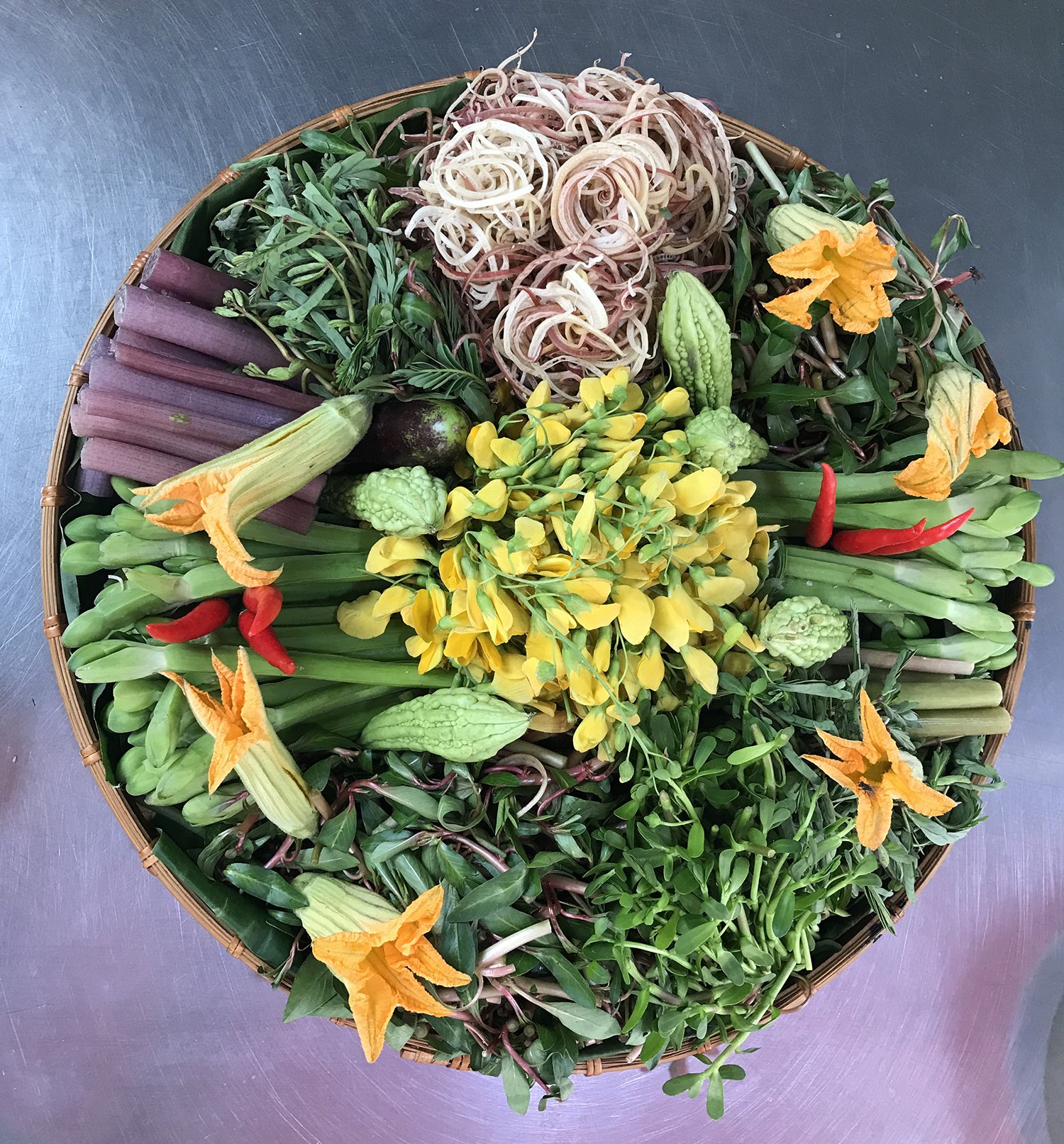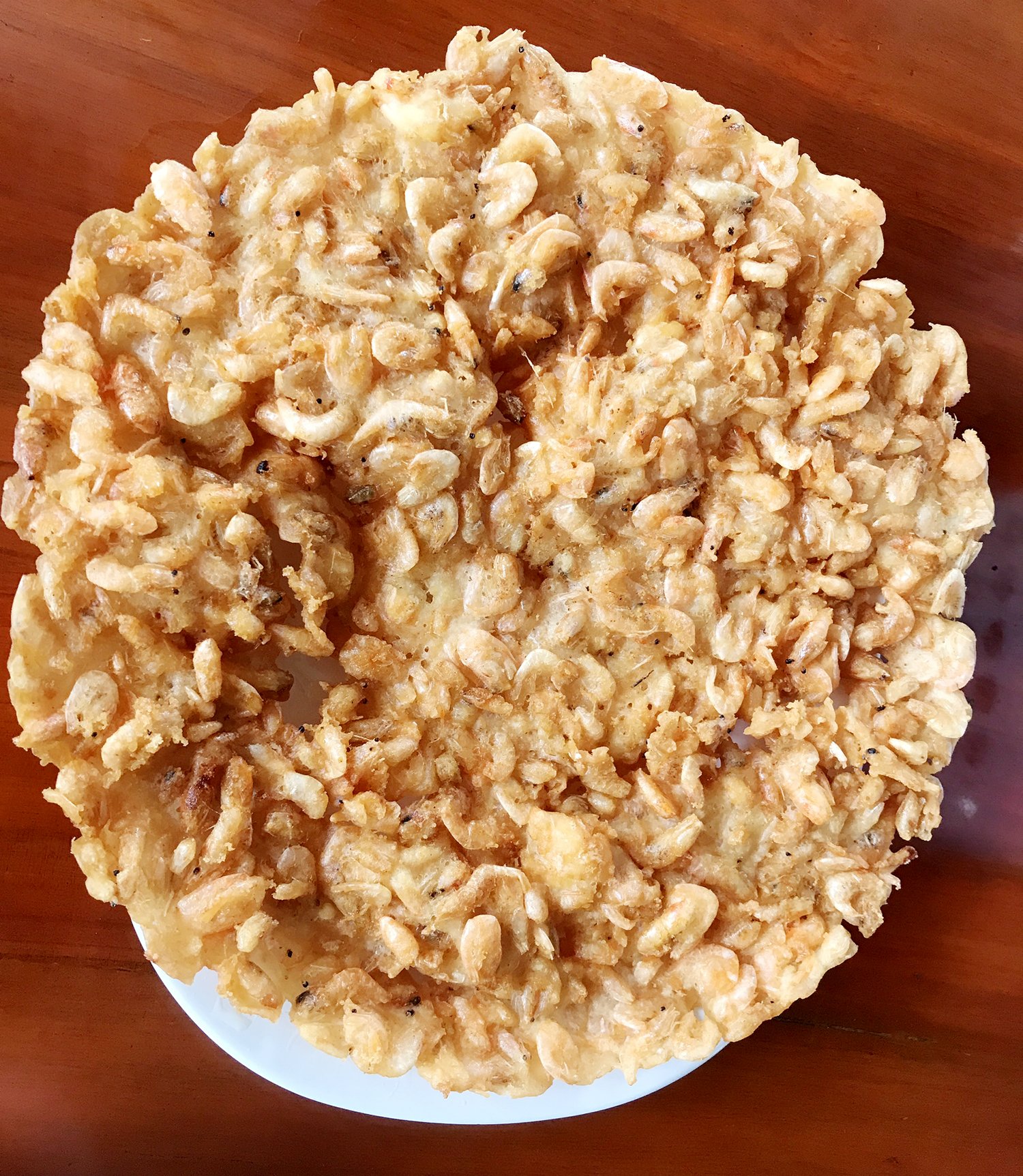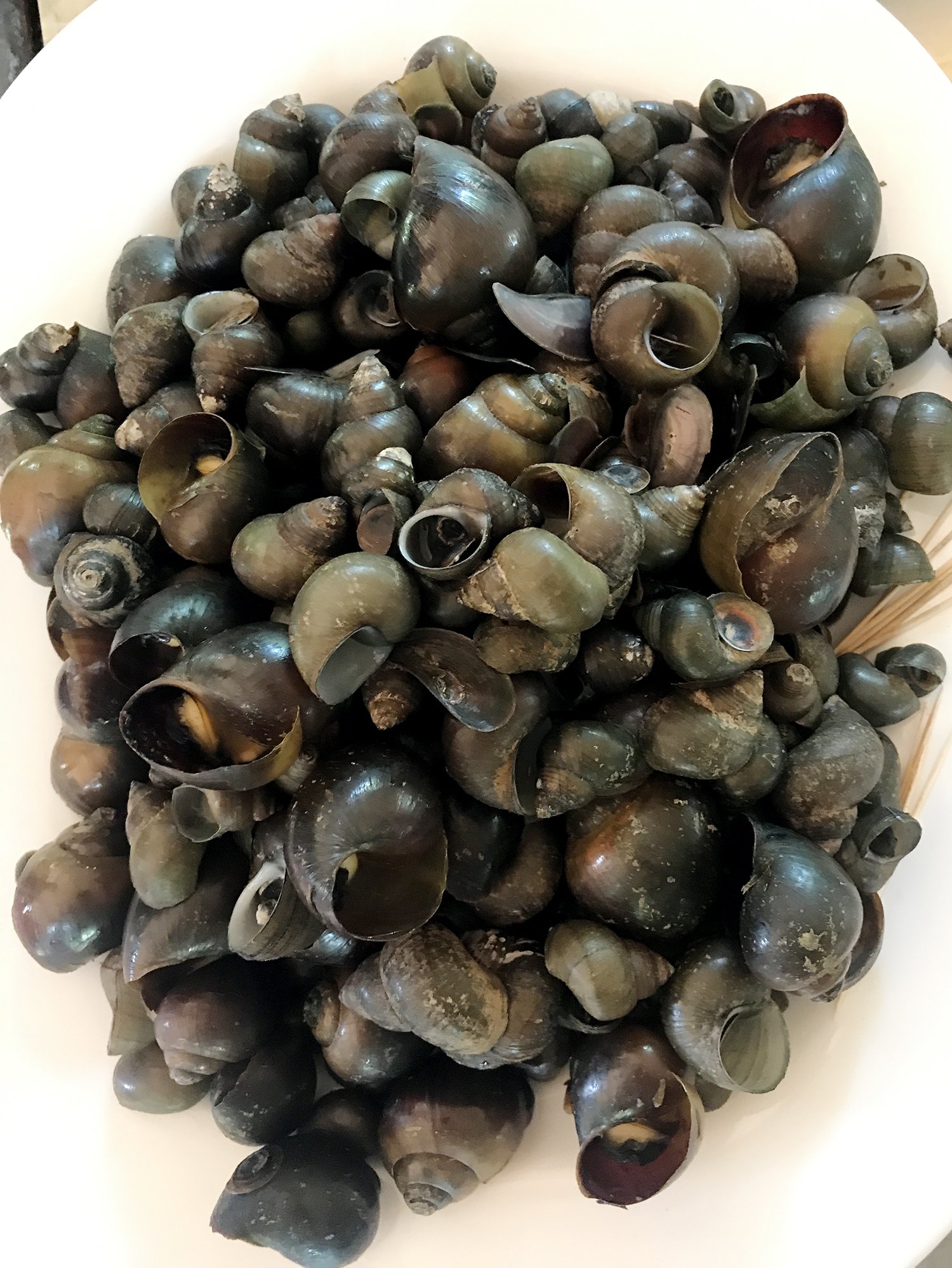The flood season not only creates a vast and beautiful landscape of rivers and water but also brings the people of An Giang a rich source of natural products that can be processed into unique and delicious dishes that are only available during the flood season.

Flood season products
An Giang is a province located at the upper reaches of the Tien and Hau rivers, blessed with abundant natural products and alluvial resources. According to the laws of nature, every year from July to November on the lunar calendar, the water from the upper reaches of the Mekong River floods the fields. During the floating season, from the fields to the market, there are always various rustic dishes made from river and pond fish, such as perch, crab, snails, mystus, catfish, snakehead fish, bagridae and henicorhynchus (Linh fish) is indispensable, as well as aquatic vegetables like golden Sesbania sesban flowers (hoa điên điển), water lilies (hoa súng), green water mimosa (rau nhút) and limnocharis flava (cù nèo) vegetables which are all specialties of the floating season. The local people use these products to create many tempting dishes.
The floating water season is the season when Linh fish grows and develops. Linh fish is usually quite small, about the size of a finger, and it is about 2 fingers while larger. Although it has a small shape like other types of fish, it has a very unique flavor. Especially, Linh fish can be prepared into many delicious dishes. At the beginning of the floating season when Linh fish is still young, people often use it to braise, braise with lemongrass, and cook sour soup because the bones are soft and can be eaten whole fish body, without removing the bones. Or while it is larger than two fingers, it will be processed after being cleaned, breaded, then dropped into a pan of boiling fat and fried until crispy or braised with sugar cane...


When talking about flood season products, one cannot ignore the Sesbania sesban flowers. This is a typical flower of the flood season, each year it only blooms into bright yellow flowers on river banks and fields. Sesbania flowers can be processed into many delicious dishes, such as: Making pickles, cooking soup, making salad, stir-frying with shrimp,... or eating raw by eating with braised fish, dipping in sour hot pot, eating with fish noodle soup,,... Among them, Stir-fried sesbania with shrimp is a rustic dish with simple ingredients and quick cooking time. Sesbania flowers, after being stir-fried, are both crispy and soft, fragrant, slightly astringent but have a sweet aftertaste, combined with the sweetness of the shrimp to stimulate the taste buds. Floating water season is also the blooming season of water lilies throughout the river area. Water lily stems do not have any special taste, they are spongy, crispy, and contain a lot of water. Water lilies are eaten with Sesbania flowers and vegetables in braised fermented fish, used with vermicelli noodles, braised fermented fish in hotpot or sour soup. In addition, water lily can also be squeezed into stir-fried, boiled water lily salad, or made into pickles,...
The flooding season has brought many delicious rustic dishes, including delicious dishes from field frogs. Frogs in the floating season are very big, fat, with fleshy and firm thighs. When processed into dishes, they are often very fragrant, delicious and attractive, such as: Frog fried in butter, frog stir-fried with coconut milk, grilled frog with lemongrass and chili or frog porridge,... In addition, when walking along dikes, high mounds or big trees in the middle of the water field where they are the habitat of big and fat small or little mice. Their meat can also be processed into many delicious dishes, such as roasted rats, cooked with coconut water, cooked with fermented rice, stir-fried with Chinese onion (củ kiệu), fried rats,... Among them, perhaps rat marinated with fermented tofu (chao) and grilled over charcoal is the most popular dish attracted many locals and tourists. Under the heat of charcoal, each muscle of the rat meat tightens, and from time to time the rat fat drips drop by drop, sizzling on the grill. A moment later, the mouse's meat turned golden yellow and a sweet aroma emanated. This dish is often served with raw vegetables, green bananas, used together with salt of pepper and lemon or chili fish sauce mixed with green mango which has enough salty, sweet, sour and spicy flavors to make it absolutely delicious.


Another specialty of the flood season is the grilled snakehead fish dish, with an unsophisticated preparation, no need to marinate or scale, but just burying it straight into a pile of rice straws and setting it on fire. Grilling until all the ashes are gone, then scraping off the blackened parts and enjoy. After grilling, the fish meat still retains its natural sweetness. When eating this dish, people often dip it with salt mixed with chili or tamarind fish sauce to get the right taste. This dish is like a characteristic of the people in the flood season, imbued with love and rusticity. The flood season is also the time when crabs and snails proliferate in the fields. Field crabs can be processed into many delicious dishes such as vermicelli noodles, boiled crabs dipped in chili salt, roasted crabs with salt... As for the snails, it has juicy and crispy meat, snails can be processed into many delicious dishes such as: Boiled snails with lemongrass, steamed snails pepper, roasted tamarind, grilled snails,... Anyone who has the opportunity to use it once will remember it forever.
Besides, snakes are also considered one of the unique delicacies of floating water season. Everywhere is flooded in water, snakes gather in mounds and tall trees to feed and reproduce, so they are easy to find. They are mostly non-poisonous, not rare species, such as: Water snakes (rắn nước), Acrochordus granulatus (rắn ri cá), Subsessor bocourti (rắn ri voi), Enhydris enhydris (rắn bông súng), Coronella austriaca (rắn trun),… Depending on the type of snake, there are different ways for processing, such as: Crispy frying, cooking porridge with green beans, grilled, stewed with lemongrass, cooked in hot pot, dried,... In addition, perch is a very popular fish in the fields during the flood season, quite abundant in canals, swamps, and flooded grass fields. In the flood season, perch go to the fields to find foods, which are fallen rice flowers, or loose rice grains after the harvest before the flood season. Perch grow very quickly and become fat because foods in nature is very abundant at this time. Perch meat is sweet, fatty, and delicious in any dishes. When mentioning perch, we often think of dishes such as: grilled perch, fried perch with the scales intact then using in tamarind fish sauce served with raw vegetables, braised perch, braised perch with laksa leaves, perch cooked in sour soup,... Although rustic, it has a rich, unforgettable flavor.
All dishes create a unique flood season cuisine that is rustic and generous like the spirit of Western people in general and An Giang in particular. Please come to An Giang during the flood season to experience and enjoy delicious dishes with unforgettable flavors to better understand the unique flood season culinary culture of the land and people of An Giang./.
News by Dang Phuong - Translation by Thi Huynh